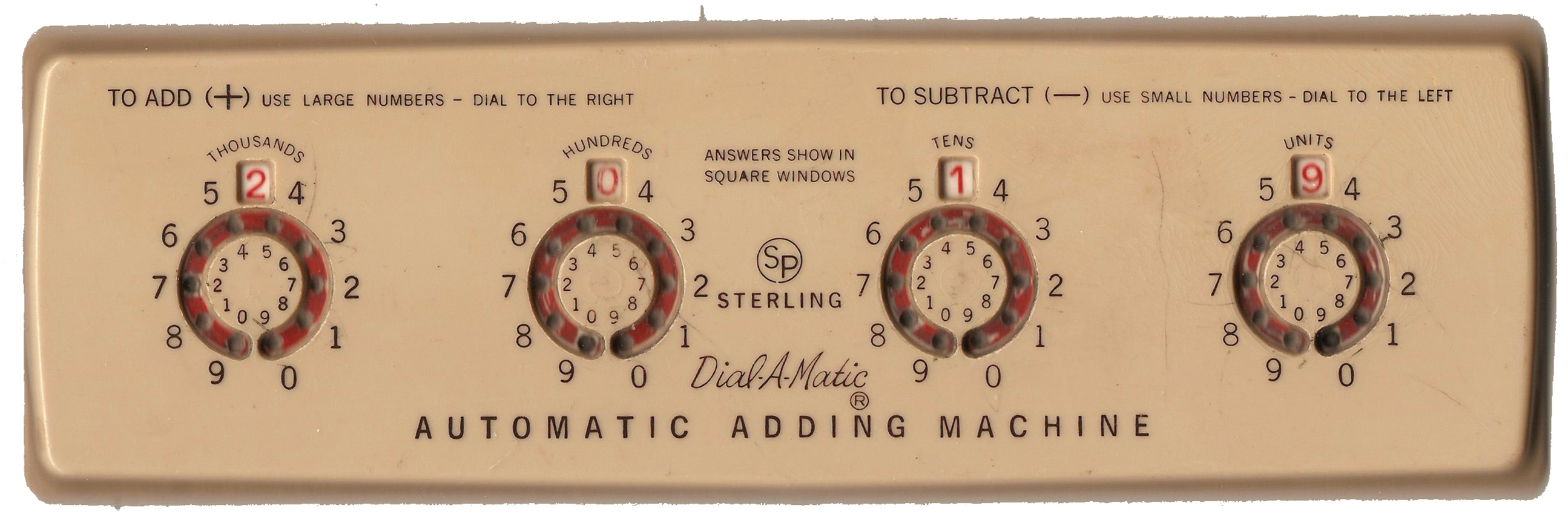Dorri Partain
Northeast News
The Dial-A-Matic Automatic Adding Machine needs no batteries or solar power to calculate the answer.
A series of connected rotary wheels and gears could be dialed to compute the equation in a portable, lightweight design.
Sterling Plastics Model No. 565 was patented by Otto Lehre in 1957.
Featuring a wheel for each unit of ones, tens, hundreds, and thousands, the user could add to or subtract from 9,999.
Other models featured five or six wheels to calculate higher amounts. Each came with a plastic pick (stylus) to rotate the dial to the necessary number; a pencil or pen point could be used as well.
To add, the user placed the pick to match the correct number outside the wheel then moved the wheel to the right until the number appeared in the window, then repeated the process until the computation was complete.
To subtract, the user followed the same process but matched the correct number inside the wheel and moved the pick to the left.
On this model, returning to zero had to be done manually, but future models included a side lever that would clear to zero automatically.
Sterling Plastics of Springfield, New Jersey carried a full line of office supplies, including various models of slide rule, used for rapid multiplication and division.
Electronics manufacturers began developing multi-function handheld calculators in the early 1970s.
Texas Instruments introduced the TI-80 in 1976, selling for $25 each.
Operated by a 9-volt battery, it replaced the need for separate adding machines and slide rules.
Otto Lehre patented another device for Sterling Products in 1960, a moistener used to dampen stamps and seal envelopes.
The Dial-A-Matic Adding Machine No. 565 retailed for $1.50.



















